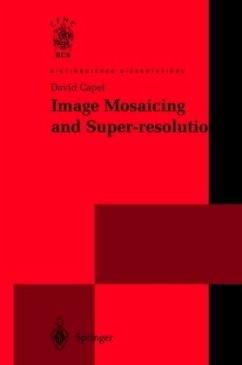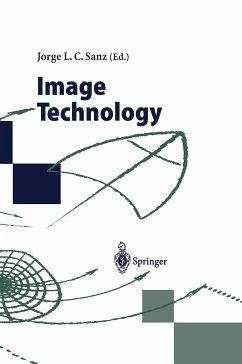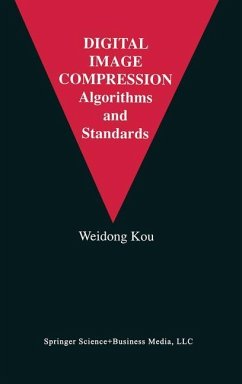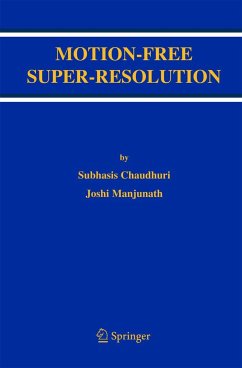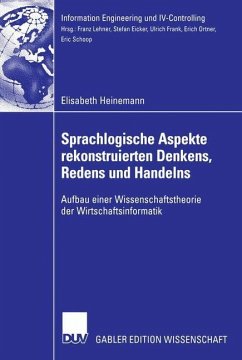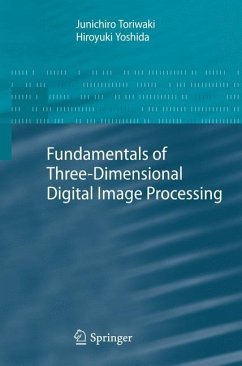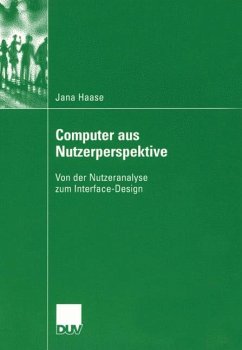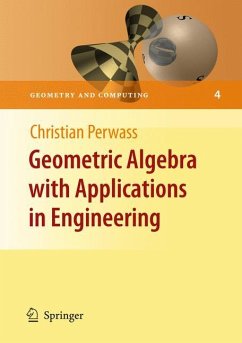
Image Mosaicing and Super-resolution
Versandkostenfrei!
Versandfertig in 1-2 Wochen
77,99 €
inkl. MwSt.
Weitere Ausgaben:

PAYBACK Punkte
39 °P sammeln!
The Distinguished Dissertation Series is published on behalf of the Conference of Professors and Heads of Computing and the British Computer Society, who annually select the best British PhD dissertations in computer science for publication. The dissertations are selected on behalf of the CPHC by a panel of eight academics. Each dissertation chosen makes a noteworthy contribution to the subject and reaches a high standard of exposition, placing all results clearly in the context of computer science as a whole. In this way computer scientists with significantly different interests are able to grasp the essentials - or even find a means of entry - to an unfamiliar research topic. This book investigates how information contained in multiple, overlapping images of a scene may be combined to produce images of superior quality. This offers possibilities such as noise reduction, extended field of view, blur removal, increased spatial resolution and improved dynamic range. Potential applications cover fields as diverse as forensic video restoration, remote sensing, video compression and digital video editing. The book covers two aspects that have attracted particular attention in recent years: image mosaicing, whereby multiple images are aligned to produce a large composite; and super-resolution, which permits restoration at an increased resolution of poor quality video sequences by modelling and removing imaging degradations including noise, blur and spacial-sampling. It contains a comprehensive coverage and analysis of existing techniques, and describes in detail novel, powerful and automatic algorithms (based on a robust, statistical framework) for applying mosaicing and super-resolution. The algorithms may be implemented directly from the descriptions given here. A particular feature of the techniques is that it is not necessary to know the camera parameters (such as position and focal length) in order to apply them. Throughout the book, examples are given on real image sequences, covering a variety of applications including: the separation of latent marks in forensic images; the automatic creation of 360 panoramic mosaics; and super-resolution restoration of various scenes, text, and faces in lw-quality video.
This book investigates sets of images consisting of many overlapping viewsofa scene, and how the information contained within them may be combined to produce single images of superior quality. The generic name for such techniques is frame fusion. Using frame fusion, it is possible to extend the fieldof view beyond that ofany single image, to reduce noise, to restore high-frequency content, and even to increase spatial resolution and dynamic range. The aim in this book is to develop efficient, robust and automated frame fusion algorithms which may be applied to real image sequences. An essential step required to enable frame fusion is image registration: computing the point-to-point mapping between images in their overlapping region. This sub problem is considered in detail, and a robust and efficient solution is proposed and its accuracy evaluated. Two forms of frame fusion are then considered: image mosaic ing and super-resolution. Image mosaicing is the alignment of multiple images into a large composition which represents part of a 3D scene. Super-resolution is a more sophisticated technique which aims to restore poor-quality video sequences by mod elling and removing the degradations inherent in the imaging process, such as noise, blur and spatial-sampling. A key element in this book is the assumption of a completely uncalibrated cam era. No prior knowledge of the camera parameters, its motion, optics or photometric characteristics is assumed. The power of the methods is illustrated with many real image sequence examples.





